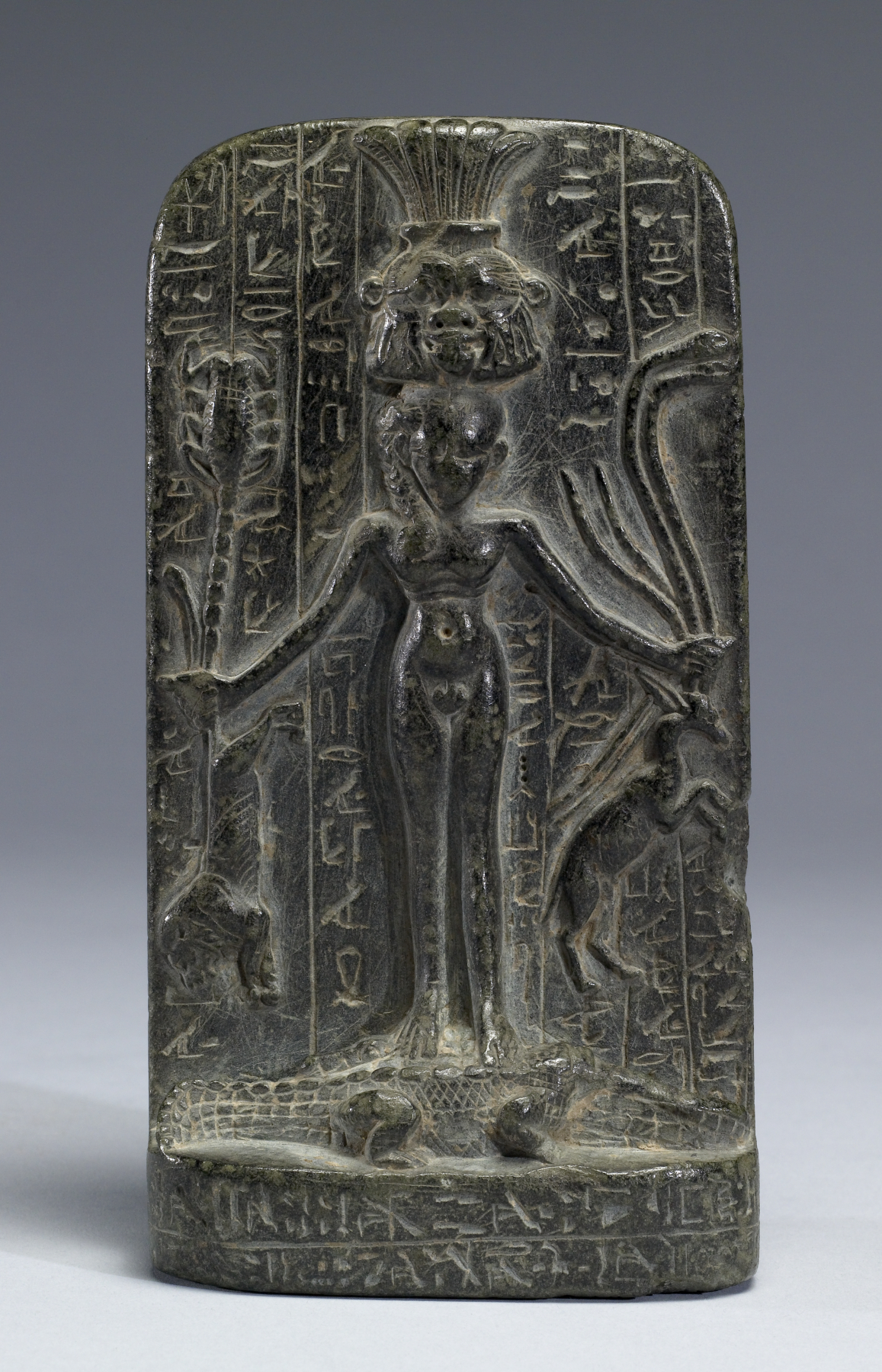Horus Stele
(Ancient Egypt and Nubia )
The Horus stele, or "cippus," was one of the most important items associated with magic in ancient Egypt. At the center of these stone slabs was the nude figure of the child Horus, or Harpocrates, associated with the newborn sun, with the head of the god Bes above him. Horus-the-Child, the son of Isis, stands on two crocodiles and holds dangerous animals (snakes, scorpion, lion, and antelopes) in his hands, demonstrating that with supernatural powers even a child can overcome dangers. Texts and magical scenes occupy most of the empty space. Larger examples of these Horus stelae were placed in temple precincts, where priests poured water over them to absorb the magical power of the spells and images. Drinking the water, it was believed, would protect against the harmful bites of dangerous creatures as well as other dangers and evils. Smaller versions were used at home, and very small ones were worn as amulets.
Provenance
Provenance (from the French provenir, 'to come from/forth') is the chronology of the ownership, custody, or location of a historical object. Learn more about provenance at the Walters.
Dikran Kelekian, New York and Paris, by purchase; Henry Walters, Baltimore, 1923, by purchase; Walters Art Museum, 1931, by bequest.
Exhibitions
| 2006-2007 | Daily Magic in Ancient Egypt. The Walters Art Museum, Baltimore. |
| 1964 | Thou Shalt Have No Other Gods Before Me. The Jewish Museum, New York. |
Conservation
| Date | Description | Narrative |
|---|---|---|
| 10/12/2006 | Treatment | cleaned |
Geographies
Egypt (Place of Origin)
Measurements
H: 6 5/8 × W: 3 1/2 × D: 2 3/8 in. (16.8 × 8.9 × 6 cm)
Credit Line
Acquired by Henry Walters, 1923
Location in Museum
Accession Number
In libraries, galleries, museums, and archives, an accession number is a unique identifier assigned to each object in the collection.
In libraries, galleries, museums, and archives, an accession number is a unique identifier assigned to each object in the collection.
22.332




